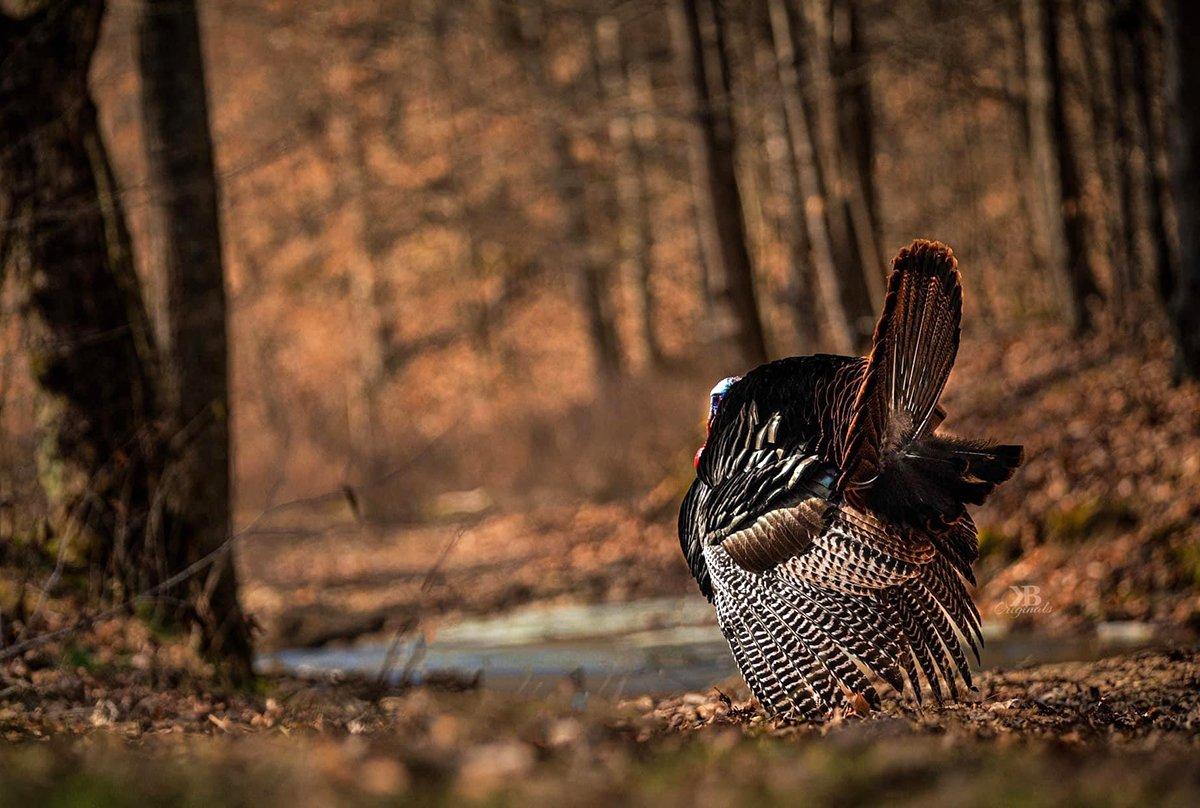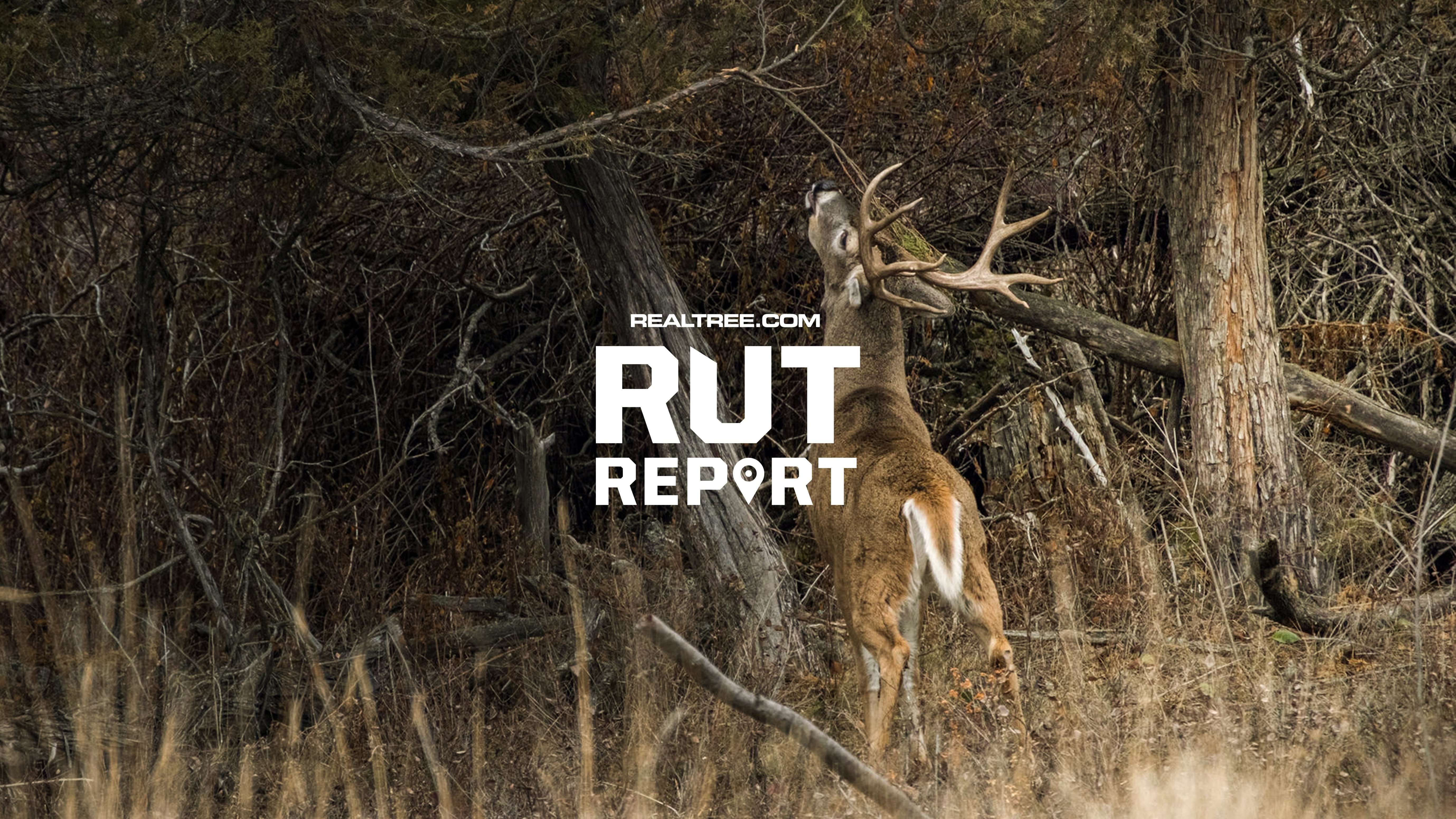Where you sit is more important than how well you yelp

Knowing where to setup is very important to your turkey calling success. Image by Kerry Wix
This spring I’ll be joyfully participating in my 45th spring turkey season. Over all the years I’ve made every hunting and calling mistake you can imagine, but I’ve learned a few things too. Like where you set up to call a gobbler is more important than how good a yelper you are.
Bluff a Bird
One fine April morning I was walking out an oak ridge when a gobbler cranked up down in a hollow. I slipped off the ridge and onto a long, open flat bench sparkling with sunshine. The turkey might have marched up out the nearby bottom, hit the flat, and strutted magnificently for 150 yards to my calls. But why take the chance?
Instead, hidden by the edge of the slope, I shuffled toward the far end of the bench like I was walking down 5th and Main. Why sneak toward a turkey when you know he can’t see you? Besides, by walking and shuffling leaves, a gobbler sometimes thinks a hen is coming to him.
I shuffled along, pulled up 30 yards from the lip of the bluff and sat down against a big oak. I couldn’t see down into the bottom — perfect! The gobbler couldn’t see up to where the “hen” was calling either. I yelped twice and heard the big bird’s feet churning in the leaves. I barely had time to level my 12-gauge and fire as he popped over the rise.
Rather than try to call a turkey across 150 yards or more of flat, open woods, where he is apt to hang up 80 yards or so away, try to maneuver around and find a calling spot with a bluff, hill, or other rise in the terrain between you and a gobbling bird. Make the strutter crest the rise in search of your calling, then take him.

Understanding how turkeys use the terrain, and where they want to go, is vital when calling to turkeys. Image by Bill Konway
Logging Road Set
You’re walking an old logging road and a gobbler roars 125 yards up ahead. He’s either in the road, or just off it in the timber. Your inclination is to sneak a few more yards, find a tree on the edge of the road and set up there. You might stake a decoy in the two-track. The set seems legit, but most of the time things won’t work out.
I’ve hunted hundreds of “road turkeys” in national forests in the East and South, and can tell you this. The odd red-hot gobbler with no hens might run down a two-track and into shotgun range, but most hard-hunted Eastern turkeys will come down a road to 80 yards or so and hang up from your calling, strutting and waiting for a hen to come the final yards to them. When this doesn’t happen, a tom gets bored and leaves.
I like to sneak 20 to 30 yards off to the side of a road where a turkey is gobbling. I hide against a tree where I can see and shoot out into the road just in case he comes that way. But mostly I make sure I can see and cover the roadside woods up ahead. Many toms will strut aways down a road, and then veer off into the adjacent timber to commit the final yards to your calls. Be ready for that.
Think Thick
A gobbler generally won’t come through a heavy tangle of brush or a big slash pile to get to your hen calls. That is precisely why you can use that thick stuff to your advantage.
Say a turkey gobbles out a ridge 150 yards away. Sneaking toward him through open timber, you run into a patch of honeysuckle and greenbrier. Most hunters think they must get in front of that thicket before setting up, but positioning behind it is the smart thing to do.
If you set up in front of brush with nothing but open woods between you and a gobbler, what might happen? The tom hears your calls, comes part of the distance, sees no hen, and pulls the dreaded hang up, as we have talked about in this blog several times before. But by hiding in open woods 40 or 50 yards behind a brush or slash thicket, you make a tom keep moving as he seeks out the hen.
When he finally commits, he won’t walk through or over the thick stuff, but he’ll skirt it and come through an open chute or around the end either left or right of the obstacle. Listen to his gobbles and footsteps to determine which route he’ll take. Then swivel left or right — the greenery or logs will cover your moves — and take him when he appears.
(Don’t Miss: HOW AND WHEN TO MOVE ON A GOBBLER)












